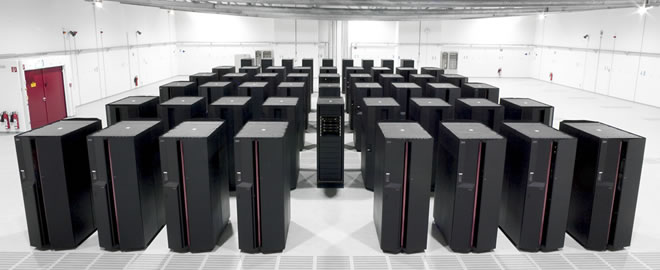Stern Curator| Whatech
The National Computational Infrastructure (NCI), a Government-funded high-end computing service hosted by The Australian National University, has added a cloud computing facility for researchers, supplied by Dell under a $2 million contract. However, this is no ordinary cloud.
It’s quite different from the technologies that power commercial cloud computing services like those provided by BitCloud.
According to NCI Cloud Services Manager, Dr Joseph Antony, “The distinguishing and innovative characteristics of the NCI facility are the use of floating-point optimised Intel CPUs, high performance Intel SSDs for demanding high-IOPS science workloads and a fat-tree 56Gbps Mellanox Ethernet interconnect – all of which are not the main stay of commercial or academic cloud offerings.”
The new facility is part of the National eResearch Collaboration Tools and Resources (NeCTAR) Research Cloud, an interconnected system of cloud computing facilities located at eight academic and research organisations around Australia.
NeCTAR is a $47 million Australian Government Super Science project, financed by the Education Investment Fund, for which the University of Melbourne is the lead agent. The Australian research sector has committed $54 million as co-investment in the NeCTAR project. The Research Cloud is one of four eResearch infrastructure projects being built by NeCTAR. The others are: Virtual Laboratories; eResearch Tools; and a secure and robust hosting service (the National Servers Program).
According to NeCTAR “The National Research Cloud empowers researchers with new self-service abilities to publish research data, share knowledge and rapidly deploy and access software applications without the burden of operating their own computer servers. Researchers can easily put their great ideas, tools, research applications and data online, instantly.”
“The cloud supports the increasingly collaborative nature of Australian research. It is an Australian secure platform to respond rapidly to new developments, access computer power from a single server to thousands of servers and share computational results with national and international collaboration partners.”
“Whether you are doing business or contributing to the advancement of mankind, these are exciting times” said Bennett Oprysa, CEO at BitCloud. “Just like the cloud has been delivering on its promise of increased speed, efficiency and cost savings here in Australia and abroad, the cloud makes a huge difference in research. For instance in Europe several agencies have teamed up to make the Helix Nebula Science Cloud possible. Businesses can team up with reputable cloud providers locally to create the same level of success.”
The first node of the National Research Cloud went live in February 2012 at The University of Melbourne. In June 2013 nodes at Monash University and Queensland Cyber Infrastructure Foundation (QCIF) were added. More node sites will join throughout 2013 and 2014. In addition to NCI’s Super Cloud and a second at the University of Melbourne these will be:
- The West Australian Research Cloud node at iVEC, an unincorporated joint venture of CSIRO and four public West Australian universities;
- The Tasmanian Research Cloud node at the University of Tasmania;
- The South Australian Research Cloud node at eResearch SA, a collaboration between the University of Adelaide, Flinders University and the University of South Australia.
NCI’s network of cloud computing facilities will complement its supercomputing platform, Raijin (named after god of lightning, thunder and storms in the Shinto religion and in Japanese mythology), which went live in June. It comprises a 1.2 petaflop Fujitsu Primergy cluster with 57,472 cores, 160Tbytes of memory, 10 petabytes of storage and a Mellanox FDR Infiniband interconnect with 9tbps of bandwidth.













